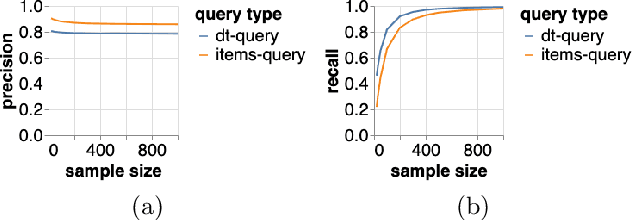Kurt Jaspers
Deriving Comprehensible Theories from Probabilistic Circuits
Nov 22, 2023Abstract:The field of Explainable AI (XAI) is seeking to shed light on the inner workings of complex AI models and uncover the rationale behind their decisions. One of the models gaining attention are probabilistic circuits (PCs), which are a general and unified framework for tractable probabilistic models that support efficient computation of various probabilistic queries. Probabilistic circuits guarantee inference that is polynomial in the size of the circuit. In this paper, we improve the explainability of probabilistic circuits by computing a comprehensible, readable logical theory that covers the high-density regions generated by a PC. To achieve this, pruning approaches based on generative significance are used in a new method called PUTPUT (Probabilistic circuit Understanding Through Pruning Underlying logical Theories). The method is applied to a real world use case where music playlists are automatically generated and expressed as readable (database) queries. Evaluation shows that this approach can effectively produce a comprehensible logical theory that describes the high-density regions of a PC and outperforms state of the art methods when exploring the performance-comprehensibility trade-off.
Automatic Generation of Product Concepts from Positive Examples, with an Application to Music Streaming
Oct 08, 2022



Abstract:Internet based businesses and products (e.g. e-commerce, music streaming) are becoming more and more sophisticated every day with a lot of focus on improving customer satisfaction. A core way they achieve this is by providing customers with an easy access to their products by structuring them in catalogues using navigation bars and providing recommendations. We refer to these catalogues as product concepts, e.g. product categories on e-commerce websites, public playlists on music streaming platforms. These product concepts typically contain products that are linked with each other through some common features (e.g. a playlist of songs by the same artist). How they are defined in the backend of the system can be different for different products. In this work, we represent product concepts using database queries and tackle two learning problems. First, given sets of products that all belong to the same unknown product concept, we learn a database query that is a representation of this product concept. Second, we learn product concepts and their corresponding queries when the given sets of products are associated with multiple product concepts. To achieve these goals, we propose two approaches that combine the concepts of PU learning with Decision Trees and Clustering. Our experiments demonstrate, via a simulated setup for a music streaming service, that our approach is effective in solving these problems.
 Add to Chrome
Add to Chrome Add to Firefox
Add to Firefox Add to Edge
Add to Edge